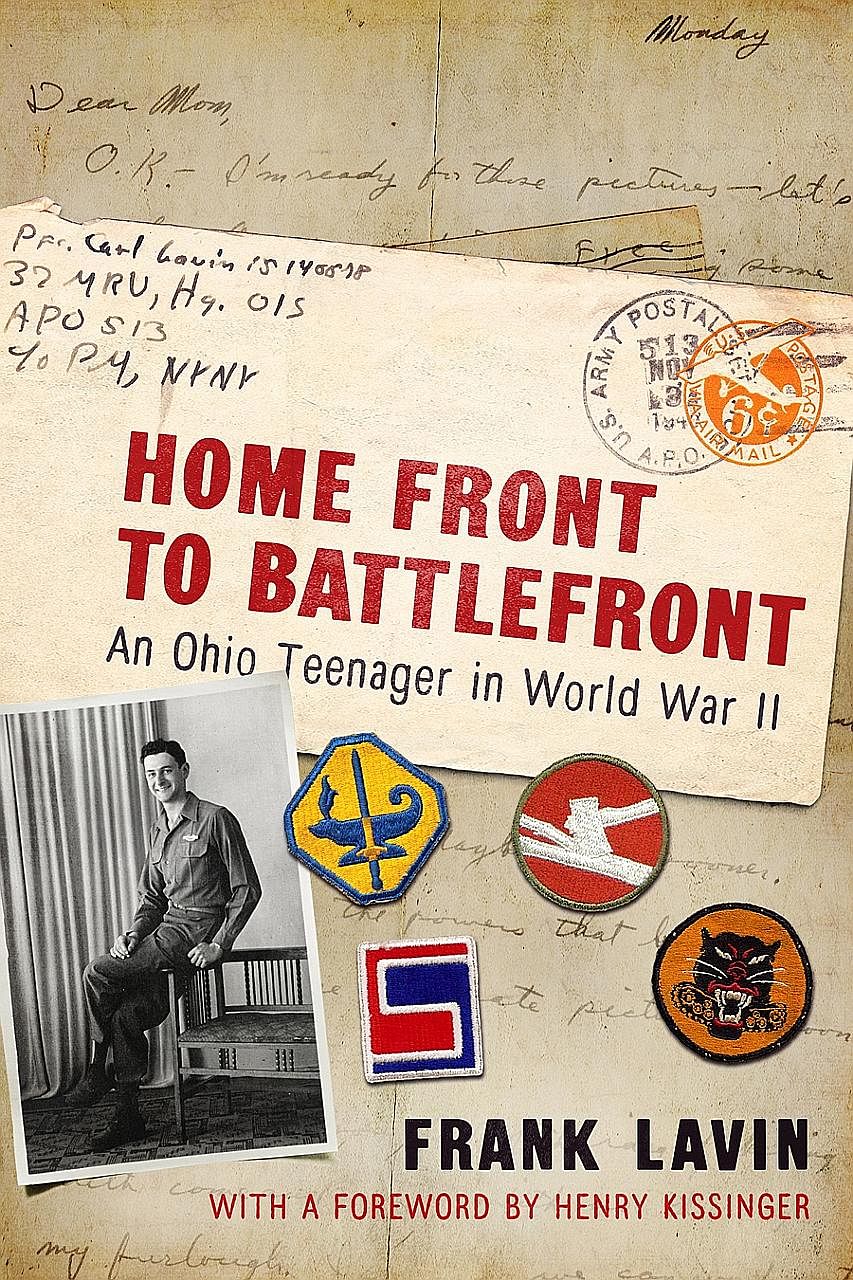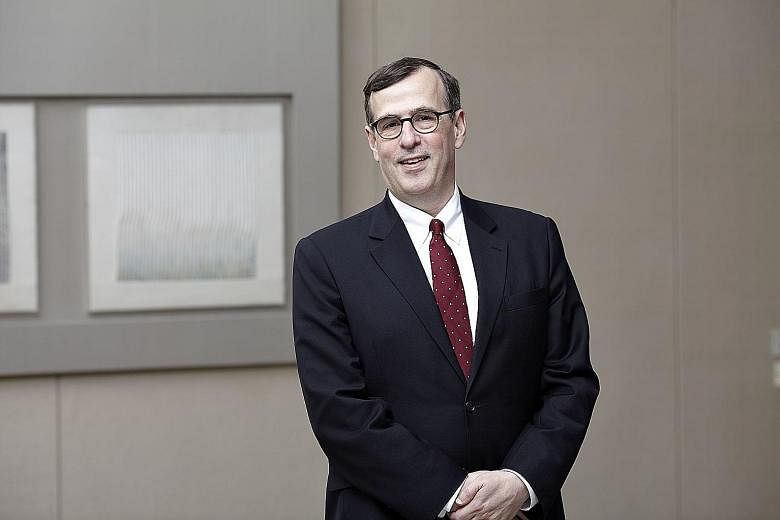In the forests of Belgium during World War II, young American soldier Carl Lavin heard his lieutenant order men to take their German prisoners of war to battalion headquarters and return in 20 minutes.
The 21-year-old knew it would take two hours to get to headquarters and back. He realised with disgust that his lieutenant was giving a coded order to take the Germans and shoot them in the woods. Letting them live would endanger the unit because no men could be spared to guard them.
Though he was not picked to carry out the execution, the sight of the prisoners being led away would haunt him for the rest of his life.
This was one of the darker revelations his son Frank Lavin, the United States ambassador to Singapore from 2001 to 2005, discovered while researching his father's military service to write a book.

Home Front To Battlefront is a World War II narrative told through the eyes of the elder Mr Lavin, a Jewish teenager who signed up to be a foot soldier in the US Army in the wake of the Pearl Harbor bombing.
It cobbles together material from more than 200 letters he wrote home to his family, as well as interviews with his son Frank and research from official military records and historical archives.
Frank Lavin, who is the founder and chief executive of e-commerce firm Export Now, began working on the book in 2004. It was intended at first as a family project to preserve the war memories of his father, who died in 2014, a few months short of his 90th birthday.
-
VIEW IT/ HOME FRONT TO BATTLEFRONT: BOOK LAUNCH
-
WHERE: Lobby, Oei Tiong Ham Building, Lee Kuan Yew School of Public Policy, 469C Bukit Timah Road
WHEN: May 31, 5.15 to 6.30pm
ADMISSION: Free (register at https://nus.edu/2oxM0Ou)
"People become enamoured of war without a full appreciation of its horror and cost," says the 59-year-old father of three over the telephone from Ohio, where he is in the midst of an American book tour.
"My father never wanted to romanticise the struggle - in fact, I knew next to nothing of his wartime service. He was a modest man who would say that others sacrificed more."
The book traces the footsteps of Carl as he enlists in the army at age 18, is shipped to training camp and later across the Atlantic to fight in Europe.
He recounts having to dig foxholes in frozen ground with toy-like shovels and hide in them from enemy shells, and trading cigarettes with Belgian housewives for apple pie.
He experienced close shaves - he was hit by shrapnel in the foot instead of the face, nearly captured by German troops after his fellow soldier, under fire, deserted him and almost killed by friendly fire as he tried to get help for his wounded sergeant.
Despite the violence of the accounts, Carl's youth is also apparent in his letters to his parents, in which he frequently complains, implores them to send him food or money and talks about girls he would like to date.
Former US Secretary of State Henry Kissinger, who served in the same regiment as Carl, writes in the book's foreword: "We sometimes forget that the US Army was, and is, essentially a force of teenagers and young men who are required to grapple with the exigencies of combat even as they are attempting to grapple with adulthood."
After the war, Carl returned to his family's meat-packing business in Ohio. He later married and had four children, nine grandchildren and three great-grandchildren.
Frank will be launching the book in Singapore next month at the Tanglin Club, The American Club and the Lee Kuan Yew School of Public Policy. The first two events are for club members only.
He hopes readers come away from the book with a renewed appreciation of the sacrifices made by the generation that fought in World War II - from America and elsewhere - while at the same time warned against the triumphalism of war.
He says: "There's a considerable cost to war, a considerable price to pay in human terms that is quite shocking.
"I think the Americans and their allies are very proud of the role they played, but you certainly don't come out of that experience saying, 'Let's do this again'. Even knowing the cause was a virtuous one, we should never do this again."
•Home Front To Battlefront is available in hardcover from Books Kinokuniya at $58.91 and at book events at a promotional price.


